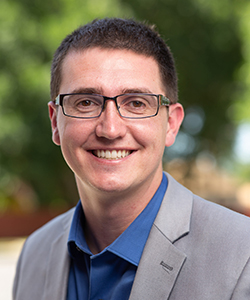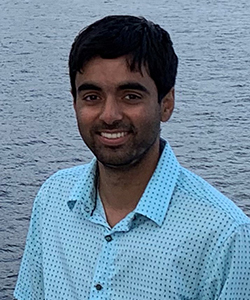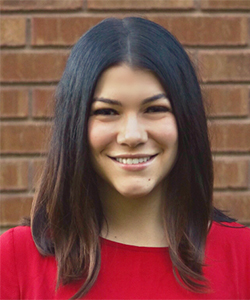In 2017, leaders at the University of Utah College of Engineering and the David Eccles School of Business recognized a vital intersection between engineering and entrepreneurship – which launched the Engineering Entrepreneurship Certificate (EEC). The unique hybrid of business, entrepreneurship, innovation and law courses has proven to be in-demand across both undergraduate and graduate engineering students.
 Fast forward to 2019, and the first student to complete the certificate requirements was Kyle Isaacson. Isaacson earned his Ph.D. in biomedical engineering. Isaacson knew he wanted to stand out, so he applied for the certificate program as soon as it was launched.
Fast forward to 2019, and the first student to complete the certificate requirements was Kyle Isaacson. Isaacson earned his Ph.D. in biomedical engineering. Isaacson knew he wanted to stand out, so he applied for the certificate program as soon as it was launched.
“Despite going for a Ph.D., I’ve always known that I was headed for an industry career and not an academic one. I figured this designation would set me apart,” he said.
The certificate program was designed to give engineering students an introduction to entrepreneurship with a focus on funding and launching technology ventures – subjects new to Isaacson.
“One of the highlights of the program for me was Richard Saouma’s class,” he said, “Prior to his class, I had no idea how startup funding rounds worked or how to really get a startup off the ground.”
Currently, Isaacson is running a freelance-scientific consulting firm called Ike Scientific. He credits the certificate courses in his professional ventures, stating that the “the EEC program has definitely helped.”
While Isaacson said the company is still a one-man show, it has been very successful. He also was honored as one of the 2019 Utah Business Magazine’s “20 in Their 20s.”
Asked if he would recommend the certificate program, Isaacson answered, “Absolutely, I would recommend it.”
 Sid Agrawal is the second student to earn the certificate as a newly minted Ph.D. graduate in chemical engineering from the University of Utah.
Sid Agrawal is the second student to earn the certificate as a newly minted Ph.D. graduate in chemical engineering from the University of Utah.
“I have always had an interest in business, and the entrepreneurship certification was a great way for me to learn about entrepreneurship and business,” he said.
Agrawal enjoyed his classes and made lifelong friends. He also found the staff helpful and friendly.
One hallmark of the certificate program is that the curriculum and course setup isn’t restricted to just lectures and slideshows.
“While I enjoyed all my classes, I thoroughly enjoyed Patent Law because of the Socratic method. The class really showed me how much patents mattered and how to protect an idea,” Agrawal said.
He also was able to get hands-on experience in his courses and extracurricular activities.
“I was involved in a few business projects through the class and also raised money from the Get Seeded program at Lassonde,” Agrawal said.
Currently, Agrawal is working at Intel as an engineer in Oregon and will be involved with printing chips as well as modeling, data analysis, technology development, patent work and processing. He plans to pursue management and maybe an MBA in the future – something he feels more prepared to do after earning the certificate.
“The program helped close the gap between engineering and business which is vital to successfully run or start a business,” he said.
He also encourages engineering students to complete the certificate program.
“If you are considering business or have the slightest interest, I would highly recommend going through the certification program. It will be worth it,” said Agrawal.
 Sophia Gardner, a materials science and engineering senior, is the first undergraduate student to earn the certificate. “I am excited to begin putting my education to practice,” Gardner said.
Sophia Gardner, a materials science and engineering senior, is the first undergraduate student to earn the certificate. “I am excited to begin putting my education to practice,” Gardner said.
In addition to her coursework, Gardner interned with the Center for Technology and Venture Commercialization.
“As an intern analyst there, I assessed the potential market values of innovations from research at the (University of Utah) and the best course for commercializing them,” Gardner said.
Gardner also joined materials science and engineering associate professor Michael Scarpulla’s research group.
“The Engineering Entrepreneurship program has given me the knowledge to work at the intersection of business and STEM in bringing research and innovations to market where they can have a tangible impact,” she said. “I am very grateful for my experience in the program. I recommend it to anyone interested in technology commercialization.”
The current percentage, how many times each bet has played – straight, angle, even / odd and others.
The order in which the numbers https://pinup-wiki.com/ appear.
The croupier’s ads and the imitation of unintelligible noise typical of real casinos add realism to virtual roulette.